#smoothie storage tips
Text
Twenty Day Challenge - Day Seven

Oh, we're just gonna talk about eating habits. This's...this's gonna be a mess.

As mentioned in the past- soft bars. So. Many. Soft bars. This man's desk, his office, his home- everything is overflowing with soft bars from every brand he could get his hands on.
His favorite is Nutrigrain but it's more difficult to eat those so he's on the fence with them. Saves them for special occasions.
When he cooks for himself, it's always (or almost always) some type of soup. Very rarely, it'll be a soft food.
Absolute Smoothie King™ fan. Has a membership and everything- drops by just about every other day for a drink, and it lasts him four to six hours (it's a thirty-two ounce every time- takes small sips every few minutes).
His favorite soup is probably a lightly spicy egg drop soup.
He almost never invites others to eat with him simply because he either: takes super long to finish the same serving size, or has a very small (think 'child's size' if not smaller) serving size.
It's actually very rare for restaurants in Japan to let people take food home,- too many worries about improper storage and the like- so Yagi almost always gets a small serving when he has to eat with others.
When he could eat whatever, he wasn't a picky eater- he'd spent enough time on his own to just accept any food he could get his hands on.
It internally hurts him to admit he can't have anywhere near as much food, anymore.
Has to be so careful what he eats/how much he eats or else he will be in agony until it finishes passing through his system.
Has a soda every once in a great while, even though it hurts a bit. He just-- misses the feel/taste...of the soda, not the pain.

The fucking pickiest eater- they're a very texture-sensitive person.
To them, all fruit tastes 'like biting into a mass of cobwebs' so they're also a big fan of Smoothie King- smoothies erase the cursed 'cobweb' texture.
There are some foods where the texture-reaction is so severe Fin refuses to eat it no matter what (example: apples- the texture of those make Fin insanely nauseas every time).
They're not in America, so there's not really a lot of 'kid's menus' (hardly any restaurants have them, most of those are in Tokyo where foreigners majorly visit).- But they eat a bit under a kid's serving per meal, usually.
They feel awkward not tipping, but it's seen as rude in Japan, so...they don't.
Favorite meal is a grilled cheese with fries and chocolate milk. It's a bit of a comfort meal from their childhood- and very painful to come by, since dairy products are more expensive there.
Doesn't invite others to eat out with them often because they get nervous/afraid of being told 'no'.
Downs Red Bull like it's water.
Their favorite soup is tonkotsu ramen with half an avocado.
Mostly makes microwaveable/oven-ready meals because they burn nearly everything they try to cook (including their favorite meal).
The few exceptions to this are: tuna melts, boiled eggs, and cheese quesadillas.
Gets easily distracted.
"I remember how long these went in for," annnnd forgets. Two seconds later.
As for both of them...
Mostly have soup together, in the winter/when the two have a lot of time or want to do an all-night marathon, they'll make a yosenabe- or a freestyle hot pot.
Fin carries a few extra soft bars on hand just in case Yagi drops by/forgets his own snacks.
Yagi (every now and again) will cook some dish with extra cheese because he knows if it has cheese, Fin's highly likely to love it.
Fin gets lessons from Yagi every now and again for certain meals/how to keep them from burning.
Has to keep an eye on Fin or else they'll forget they were cooking anything.
Probably the silliest meal he ever got was going to Fin's apartment to see a black sludge in a pot, and Fin handing him a cup of instant ramen with the quietest '...sorry'. He helped them clean up the mess while he ate his ramen.
The two love showing each other strange eateries??? Like- anything weird. Yes, that includes the toilet-restaurant. Went in...once. Fin got incredibly nauseas (they couldn't stop picturing the actual thing clear in their head), they never went again- but the two do laugh about the experience every now and again.
They dropped by KFC about two weeks after Christmas, for the pure sake of it.
When Yagi found out Fin loved mac n' cheese?..he made them a pot of it. Fin has begged him multiple times to teach them the recipe-- but each time, they somehow destroy it.
#Together we run/Til we see the morning light || Queue#When you’re close to breakin’/Let me be your haven tonight || Cracked Facades#Writer's Yearly Challenge || 2024#I’ve got nothing else to lose/I’ve got nothing else to prove || Headcanons#vomit tw#//it's implied once or twice due to taste but still#nausea tw
2 notes
·
View notes
Text
Discover Premium Kimia Dates: Nature's Sweet Delight
Premium Quality Kimia Dates Online
Introduction
Have you ever savored the rich sweetness of Kimia dates? If not, you're missing out on a delightful experience. These dates, originating from the Middle East, have gained global acclaim for their exceptional quality and unique attributes. This article dives into premium Kimia dates, exploring what makes them unique and where to find the best ones online.
What Sets Kimia Dates Apart
Nutritional Value
Kimia dates aren't just a delicious treat but a nutritional powerhouse. Packed with essential vitamins and minerals, this supplement provides all your body's nutrients.
These dates offer a natural and wholesome snack option. From potassium to fiber, Kimia dates contribute to a well-balanced diet, promoting overall health.
Unique Taste and Texture
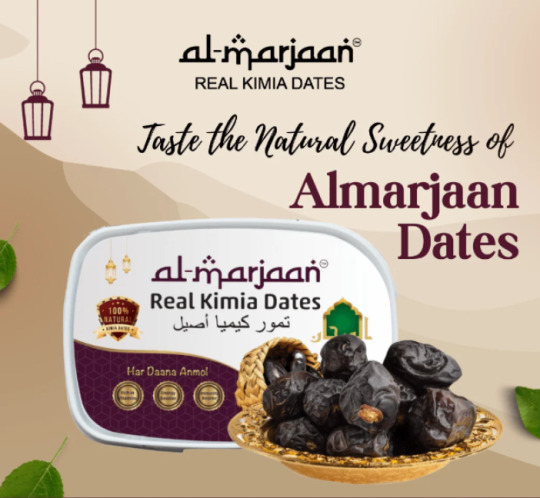
The Source Matters: Kimia Date Plantations
Ideal Growing Conditions
The secret behind premium Kimia dates lies in the ideal growing conditions. Thriving in arid climates, these dates are carefully cultivated in regions with optimal temperature and soil conditions. This ensures that each date ripens to perfection, capturing the essence of its natural sweetness.
Harvesting and Processing Methods
The meticulous harvesting and processing methods further contribute to the superior quality of Kimia dates. The fruits were harvested at their peak ripeness.
The dates are carefully selected to guarantee only the finest make it to your table. Minimal processing ensures you experience these exquisite dates' authentic, unaltered flavors.
Health Benefits of Kimia Dates
Rich in Vitamins and Minerals
Beyond their delicious taste, Kimia dates offer a plethora of health benefits. Loaded with vitamins such as A and K and vital minerals such as magnesium and potassium, these dates support immune function, bone health, and overall well-being.
Potential Antioxidant Properties
Recent studies suggest that Kimia dates possess antioxidant properties, contributing to cellular health and potentially reducing the risk of chronic diseases. Incorporating these dates into your diet might be a flavorful way to boost your body's defense against oxidative stress.
Where to Find Premium-Quality Kimia Dates Online
Curious about where to get your hands on these premium treats? Look no further than reputable online sellers. With the rise of e-commerce, several platforms offer a selection of premium Kimia dates, ensuring a convenient and reliable way to satisfy your date cravings.
Customer Reviews and Testimonials
Importance of Social Proof
When it comes to online purchases, the wisdom of the crowd matters. Customer reviews and testimonials provide valuable insights into the quality and taste of the Kimia dates you're considering. Before making a purchase, take a moment to explore the experiences of others.
Real-Life Experiences with Premium Kimia Dates
Many have shared their positive experiences with premium Kimia dates. From the first bite to the aftertaste, these testimonials highlight the unparalleled Quality and satisfaction of choosing the finest dates. Join the community of Kimia date enthusiasts and discover a world of flavor.
Recipes and Culinary Uses
Incorporating Kimia Dates into Everyday Meals
Kimia dates aren't just for snacking; they can elevate your culinary creations. Whether a sweet and savory salad or a delectable dessert, these dates add flavor to your favorite dishes. Get creative in the kitchen and explore the versatility of premium Kimia dates.
Unique Recipes for a Delightful Experience
Are you looking for inspiration? How about a date and walnut energy bar or a date-infused smoothie? The possibilities are endless. Unleash your inner chef and experiment with unique recipes that showcase the exquisite taste of Kimia dates.
Storage Tips for Kimia Dates
Ensuring Freshness and Quality
Proper storage is essential to maintain freshness.
And the quality of your premium Kimia dates. Kindly store them in a cold, dark area in an airtight container. Refrigeration is also an option if you want to extend their shelf life. Enjoy the same level of quality with every bite by following these simple storage tips.
Shelf Life Considerations
While Kimia dates are known for their long shelf life, it's essential to be mindful of storage conditions. Check the packaging for specific recommendations, and consume the dates within the suggested timeframe to ensure optimal taste and texture.
Comparisons with Other Date Varieties
Contrasting Kimia Dates with Medjool and Deglet Noor
How do Kimia dates compare to popular varieties like Medjool and Deglet Noor? While each has unique qualities, Kimia dates offer a perfect balance of size, sweetness, and nutritional value. Explore the differences to find the date variety that suits your taste preferences.
Finding the Right Fit for Your Taste Preferences
Dates come in various shapes, sizes, and flavors. Whether you prefer the caramel-like sweetness of Medjool dates or the lighter taste of Deglet Noor, Knowing the subtleties will enable you to make an informed decision. Choice. Discover your favorite and indulge in the world of premium dates.
Sustainability Practices in Kimia Date Farming
Environmentally Friendly Cultivation
Sustainability is a growing concern, and it extends to date farming. Premium Kimia dates often come from farms that prioritize environmentally friendly cultivation practices. Supporting brands that embrace sustainable agriculture ensures you're enjoying high-quality dates and contributing to a healthier planet.
Supporting Ethical and Sustainable Agriculture
By choosing premium Kimia dates, you're supporting ethical and sustainable agriculture. Many date plantations focus on fair labor practices and eco-friendly farming methods. Make a conscious choice to enjoy your dates guilt-free, knowing they come from sources committed to the well-being of consumers and the environment.
Shipping and Packaging: Ensuring Freshness
Importance of Proper Packaging
The journey from the date plantation to your doorstep involves careful shipping and packaging. Reputable online sellers prioritize the freshness of their products by using secure and protective packaging. This ensures that the premium quality of Kimia dates remains intact throughout the delivery process.
Delivery Considerations for Online Purchases
When ordering premium Kimia dates online, consider the delivery timeframe and conditions. Opt for sellers with reliable shipping practices to guarantee your dates arrive in perfect condition. Timely delivery ensures you can enjoy the exquisite taste of Kimia dates without any compromise.
Price Points and Value for Money
Understanding the Pricing Structure
While premium Kimia dates come with a higher cost, being aware of the elements influencing the cost is essential. From cultivation practices to harvesting methods, various components affect the final price. Recognizing the value in each bite allows you to appreciate the investment in quality.
Conclusion
In conclusion, quality doesn't always have to break the bank. Explore different brands and sellers to balance premium quality and affordability. With a bit of research, you can discover options that fit your budget while still delivering the exceptional taste and nutritional benefits of Kimia dates.
2 notes
·
View notes
Text
A Pantry Full of Forgotten Treasures: My Experience with "The Lost Superfoods"

For years, I've been on a quest to incorporate more nutrient-dense foods into my diet. While I embraced the usual suspects like kale and quinoa, I felt there might be more out there waiting to be discovered. That's when I stumbled upon "The Lost Superfoods," a book that delves into a world of forgotten, yet powerful, food sources. This book has become a treasure trove of information, transforming my approach to healthy eating and prepping. Here's why "The Lost Superfoods" deserves a prominent spot on any health-conscious cook's bookshelf.
A Treasure Trove of Forgotten Powerhouses
"The Lost Superfoods" unveils a fascinating array of forgotten or underutilized foods, each brimming with unique nutritional benefits. From the protein-rich power of hemp seeds to the antioxidant punch of elderberries, the book explores a diverse range of options. The authors, Art Rud, Claude Davis, and Fred Dwight, provide detailed information on each food, including its historical significance, nutritional profile, and potential health benefits. This comprehensive approach ignited my curiosity and fueled my desire to incorporate these forgotten gems into my meals.
Beyond the Plate: A Prepper's Companion
What truly surprised me was the book's focus on "The Lost Superfoods" as a valuable resource for food prepping. The authors dedicate a significant portion of the book to discussing the long shelf life and storage potential of many of these forgotten foods. They provide practical tips and techniques for drying, storing, and incorporating these foods into emergency preparedness plans. In today's uncertain times, this aspect of the book offered an unexpected and valuable bonus.
Easy-to-Follow Recipes and Practical Tips
"The Lost Superfoods" isn't just an encyclopedia of forgotten foods; it's a practical guide for incorporating them into your diet. The book features a variety of delicious and easy-to-follow recipes that showcase the versatility of these powerhouses. From breakfast smoothies packed with chia seeds to hearty stews featuring ancient grains like teff, the recipes cater to a range of preferences and dietary needs. Additionally, the book offers helpful tips on sourcing these forgotten foods, making it easier to find them in local markets or online retailers.
A Sustainable and Budget-Friendly Approach
Many "superfoods" can be quite expensive, but "The Lost Superfoods" focuses on readily available and often budget-friendly options. The focus on forgotten foods readily found in certain regions makes this approach more sustainable and accessible to a wider audience. Plus, the long shelf life of many of these foods translates to less waste and a more responsible way of stocking your pantry.
An Investment in a Healthier You
Investing in "The Lost Superfoods" is an investment in your health and well-being. The book empowers you to explore a wider range of nutritious foods, add variety to your diet, and potentially boost your overall health. While consulting a qualified nutritionist is always recommended, this book provides a wealth of information and resources to guide you on your journey towards a healthier lifestyle.
A Must-Have for Food Enthusiasts and Preppers Alike
"The Lost Superfoods" is more than just a cookbook; it's a captivating exploration of forgotten culinary treasures. Whether you're a health-conscious foodie looking to expand your culinary horizons or a prepper seeking long-lasting, nutritious options, this book will be a valuable addition to your collection. With its fascinating insights, practical recipes, and budget-friendly approach, "The Lost Superfoods" has transformed my kitchen and my approach to healthy eating.pen_sparktunesharemore_vert
0 notes
Text
Eating BUTTERELA Natural Peanut Butter can be good for your heart.
Eating BUTTERELA Natural Peanut Butter can be good for your heart. The healthy fats in peanuts can lower the bad cholesterol and raise the good one, which helps reduce the risk of heart problems. Eating BUTTERELA Natural Peanut Butter in moderate amounts could actually help with managing your weight, even though it's high in calories. The mix of protein, fiber, and healthy fats can make you feel full and satisfied, so you might end up eating fewer calories overall. Blood Sugar Control: The combination of protein and fiber in natural peanut butter can help stabilize blood sugar levels, making it a suitable option for individuals with diabetes when consumed in moderation as part of a balanced diet.
Here are some easy ways to enjoy natural peanut butter:
Peanut Butter and Banana Sandwich: Spread peanut butter on whole grain bread and add slices of banana for a tasty snack or meal.
Peanut Butter Smoothie: Blend peanut butter with banana, spinach, almond milk, and protein powder for a creamy and healthy smoothie, perfect for breakfast or after a workout.
Peanut Butter Energy Balls: Mix peanut butter with oats, honey, and a few chocolate chips. Roll the mix into small balls and chill for a quick and energizing snack.
Peanut Sauce: Combine natural peanut butter with soy sauce, lime juice, garlic, and ginger to create a flavorful sauce that's perfect for drizzling over stir-fries, noodles, or grilled vegetables.
Here are some easy recipes and tips for using natural peanut butter:
Peanut Butter Yogurt Dip: Mix peanut butter with Greek yogurt, honey, and a bit of cinnamon. Use it as a dip for fruit or pretzels for a yummy snack.
BUTTERELA Peanut Butter and Jelly Overnight Oats: Combine peanut butter with oats, almond milk, chia seeds, and fruit jam. Let it sit in the fridge overnight for a tasty breakfast.
Storage and Usage Tips:
Keep natural peanut butter in the fridge after opening to keep it fresh and stop the oil from separating. Give it a stir before using.
If you want it smoother, warm the peanut butter in the microwave or in warm water before spreading.
Try adding cocoa powder, honey, cinnamon, or vanilla extract to your peanut butter for different flavors.
Adding high protein peanut butter to your diet isn't just tasty – it's also good for you! Whether you have it on toast, in smoothies, or in your meals, this spread gives your food a nutty flavor and helps keep you healthy.
0 notes
Text
A Forgotten Feast: A Review of "The Lost Superfoods"
I recently acquired a book that has completely revamped my pantry and prepper plans: "The Lost Superfoods : 126+ Survival Foods and Tips for Your Stockpile" by Claude Davis. This unassuming paperback has become a well-worn companion in my kitchen, offering a fascinating exploration of forgotten foods with incredible nutritional value and long shelf lives.
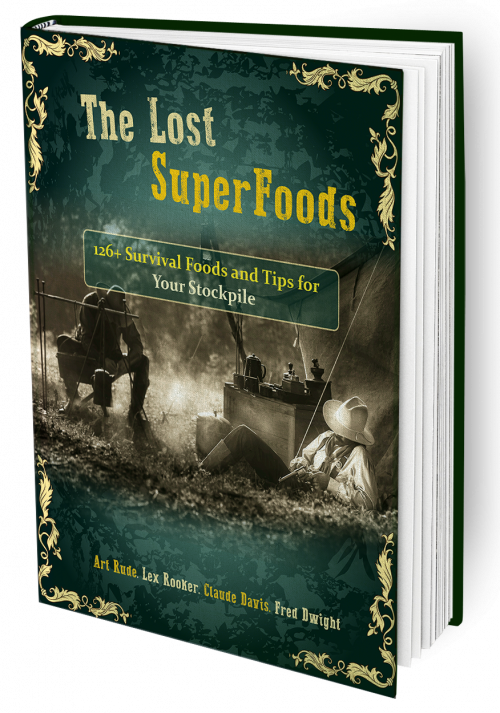
Rediscovering Resilience
The book opens by highlighting the importance of understanding the power of traditional food knowledge. Davis argues that many past generations thrived on readily available, nutrient-dense foods that have been overshadowed by modern conveniences. He highlights the resilience these historical staples provided during times of hardship, and how incorporating them into our pantries can bolster our own preparedness.
A World of Forgotten Foods
Delving deeper, "The Lost Superfoods" dives into a treasure trove of 126 forgotten foodstuffs, each meticulously detailed with captivating descriptions and vibrant coloured photographs. From the Jerusalem Artichoke, a knobbly root vegetable rich in prebiotics, to the protein-packed Kernza seed, a type of ancient grain, the book unveils a forgotten world of flavour and nutrition. Davis doesn't just list these forgotten wonders; he provides fascinating historical context for each entry, making the exploration all the more engaging.
Practical Preservation Techniques
While the book celebrates the resurgence of these superfoods, it doesn't shy away from the practicalities of storage. A dedicated section equips readers with the knowledge and skills to preserve their newfound bounty. Davis provides clear, step-by-step instructions on techniques like drying, canning, and fermentation, ensuring that these superfoods can truly become part of a long-term food stockpile.
Beyond Stockpiling: Culinary Inspiration
"The Lost Superfoods" goes beyond just survival preparedness. Each food entry boasts a dedicated recipe section, offering delicious and creative ways to integrate these forgotten ingredients into everyday meals. From hearty stews featuring dried beans and lentils to power-packed smoothies bursting with berries and seeds, the book provides inspiration for those seeking to add a touch of the extraordinary to their regular diet.
A Valuable Addition to Any Kitchen
"The Lost Superfoods" is more than just a cookbook; it's a captivating exploration of food history, a practical guide to survival preparedness, and a treasure trove of culinary inspiration. Whether you're a seasoned prepper or simply curious about incorporating more nutrient-dense options into your diet, this book offers a wealth of knowledge and practical advice. I highly recommend adding "The Lost Superfoods" to your bookshelf – it's a guaranteed conversation starter and a valuable addition to any kitchen.
#the lost superfoods#food tips#food#foodie#coocking#kitchen#cooking#foodgasm#food photography#chocolate#foodporn#daily food#healthy food#book lover#book review#food books#books#survival food#books reviewed
0 notes
Text
Unlocking Freshness: Tips for Ripening and Storage of Produce

Tips for Ripening: 1. Ripening at Room Temperature:
A lot of fruits ripen best at room temperature, including tomatoes, avocados, and bananas.
To let these fruits ripen naturally, place them on the countertop away from heat sources and direct sunshine.
Ethylene Use:
Plants naturally produce ethylene, which accelerates the ripening process.
To expedite ripening, place unripe fruits like avocados or peaches in a paper bag with ethylene-producing fruits like apples, bananas, and tomatoes.
The Paper Bag Technique:
Put ethylene-producing fruits in a paper bag with the fruit you wish to ripen to expedite the ripening process.
Ethylene gas is trapped in the confined area, hastening the ripening process.
The Banana Hack:
Bananas can be quickly ripened for smoothies or baking by putting them in the oven for 15 to 20 minutes at a low temperature (around 250°F or 120°C).
The heat hastens the process of ripening while leaving the flavor unchanged.
Divorce:
Certain fruits, such as bananas and apples, generate an ethylene gas that causes other surrounding fruits to ripen more quickly.
To avoid early ripening, store ethylene-producing fruits apart from ethylene-sensitive ones, such berries and leafy greens.
To maximize the freshness and quality of your fruits and vegetables, use proper ripening and storage methods.
Produce ripens uniformly and keeps fresher for longer if you know what special requirements each variety has.
Visit site
Email us: [email protected]
#Banana Ripening Chamber manufacturer#Top Ripening Chamber Manufacturers in India#Ripening Chamber Manufacturers#Fruits Ripening Chamber#Banana Ripening facility
0 notes
Text
From Bland to Brilliant: Fun Ways to Make Psyllium Husk a Part of Your Routine
Nutritionists, doctors, and dietitians worldwide emphasize the significance of incorporating fiber into one's diet to enhance digestion, promote gut health, and facilitate weight management. Fiber plays a crucial role in overall health improvement and maintenance. Psyllium husk, a fiber-rich plant product, has emerged as a revolutionary addition to the health industry, offering numerous benefits. Psyllium Husk is obtained from the seeds of the plant called plantago Plantago ovata. Since it is 100% plant products, it is 100% vegan, and versatile dietary fiber. It is well known across the globe immense health benefits, including improved digestion, weight management, and heart health.

One should include following tips and tricks to incorporate psyllium husk in daily diet or daily intake.
Slow Start : At the initial stage of staring intake of psyllium , one should be careful with amount of psyllium husk to be consumed. This amount depends upon the age, body health and current medical condition. Starting with small quantities of psyllium husk will help your body to adapt the change in the fiber content of the food consumed. May be one can start with consuming half a teaspoon along with a glass of water or your favourite drinks.
Hydration: Psyllium husk a beautiful property of absorbing water to great extent and there by forming a gel like substance. This helps soften stool and regulate bowel movements. If fluids are not taken in appropriate amount it may create hard gel resulting in stomach and intestine discomfort. When consuming psyllium husk, one should aim to drink for at least 8 glasses of water per day to keep yourself hydrated.
Mixing and Recipes: Psyllium husk tastes bland so best way to consume it is with flavoured beverages juices, lemonade smoothies, buttermilk, shakes oatmeal etc. Psyllium husk can also be used in baking cakes, bread, cookies, buns, which can be easily consumed as daily meals. One should experiment with different recipes and find what works best for oneself.
Timing Of Consumption: Dietician and nutritionist advice that to have maximum benefits of psyllium husk, please have it before 30 minutes of you mealtime. This will create a signal to to your brain that your stomach is full which in turn will reduce the overeating pattern and help in weight management.
Listen to Your Body: Looking into the benefits of having psyllium in out diet, one should pay attention to one’s body and how it reacts to psyllium husk. Normally, I can be called a safe threshold to consume 1 tablespoon of husk for direct consumption. Sometimes, someone may experience bloating, gas, or other digestive issues. Hence it it is advised to have psyllium husk with consultation of doctors or experts.
Quality and Storage: While considering psyllium husk one should keep the quality and brand in mind before purchasing. Psyllium husk being a plant based product should be free from dust, insects and microbial parameters. About storage one should store ths product in airtight container to avoid contact with moisture in the atmosphere. A cool and dry place is best to maintain its freshness and potency.
Adding psyllium husk to our daily intake can be made simple and effective way to improve overall health. One should keep in mind important aspect of quality, hydration and being mindful about consumption.
When is comes to quality of psyllium husk and buying good pure husk, it is recommended to buy from best psyllium husk manufacturer and exporter from India named Veeral Agro Tech and Kisan Agro. If you want to buy good quality psyllium husk please contact [email protected] where you will get genuine responses for psyllium husk.
#Psyllium fiber benefits#Psyllium husk recipes#Psyllium husk for weight loss#Psyllium husk smoothie#Psyllium husk health benefits#Psyllium husk for gut health
0 notes
Text
Adding Natural peanut butter to your diet isn't just tasty – it's also good for you!
Eating BUTTERELA Natural Peanut Butter can be good for your heart. The healthy fats in peanuts can lower the bad cholesterol and raise the good one, which helps reduce the risk of heart problems.
Eating BUTTERELA Natural Peanut Butter in moderate amounts could actually help with managing your weight, even though it's high in calories. The mix of protein, fiber, and healthy fats can make you feel full and satisfied, so you might end up eating fewer calories overall.
Blood Sugar Control: The combination of protein and fiber in natural peanut butter can help stabilize blood sugar levels, making it a suitable option for individuals with diabetes when consumed in moderation as part of a balanced diet.
Here are some easy ways to enjoy natural peanut butter:
Peanut Butter and Banana Sandwich: Spread peanut butter on whole grain bread and add slices of banana for a tasty snack or meal.
Peanut Butter Smoothie: Blend peanut butter with banana, spinach, almond milk, and protein powder for a creamy and healthy smoothie, perfect for breakfast or after a workout.
Peanut Butter Energy Balls: Mix peanut butter with oats, honey, and a few chocolate chips. Roll the mix into small balls and chill for a quick and energizing snack.
Peanut Sauce: Combine natural peanut butter with soy sauce, lime juice, garlic, and ginger to create a flavorful sauce that's perfect for drizzling over stir-fries, noodles, or grilled vegetables.
Here are some easy recipes and tips for using natural peanut butter:
Peanut Butter Yogurt Dip: Mix peanut butter with Greek yogurt, honey, and a bit of cinnamon. Use it as a dip for fruit or pretzels for a yummy snack.
BUTTERELA Peanut Butter and Jelly Overnight Oats: Combine peanut butter with oats, almond milk, chia seeds, and fruit jam. Let it sit in the fridge overnight for a tasty breakfast.
Storage and Usage Tips:
Keep natural peanut butter in the fridge after opening to keep it fresh and stop the oil from separating. Give it a stir before using.
If you want it smoother, warm the peanut butter in the microwave or in warm water before spreading.
Try adding cocoa powder, honey, cinnamon, or vanilla extract to your peanut butter for different flavors.
Adding high protein peanut butter to your diet isn't just tasty – it's also good for you! Whether you have it on toast, in smoothies, or in your meals, this spread gives your food a nutty flavor and helps keep you healthy.
0 notes
Text
How to Store Mangoes the Right Way

Summer is back, and it brings back everyone’s favourite fruit the king of fruits, Mangoes. Mangoes are the sweet juicy candy-like fruits of nature, but keeping Mango fresh, so that you can use them for a long time can be a little tricky.
Fear not we got you covered with some tips and tricks that will help you savour the taste of mangoes.
Whether eaten fresh or made into smoothies mangoes just bring sunshine to our plate in summer.
But how long do you think it will last?
Let’s learn how to increase the shelf life of this wonderful tropical fruit Mango.
How long does Mango last:-
Fridge- 5 days after ripe
Room Temp- 2-3 days after ripe
Freezer - 6 months
Picking The Right Mango
There are some points to keep in mind when you buy mangoes. You need to make sure that your mangoes are semi-ripe and have a sweet smell near the stem.
Some mangoes have brown squishy spots and they are too soft but these mangoes are rotten or soon will be rotten so we need to avoid picking those.
Keep The Moist
After picking the mangoes it is important to keep them moisturised as mango loses moisture easily.
Before storing them you need to wash them properly. Use a big container filled with water and keep the mangoes in it for a longer period of time.
After some time wipe them with a paper towel which will absorb extra moisture and store them in airy bags
Storing it on the countertop
If your mangoes are semi-ripe and you want to them after it’s ripe because it tastes better.
You need to keep the mango at room temperature at your table or countertop but make sure it is away from sunlight.
Storing a room temperature helps the mango to ripe and get sweeter in taste.
Keep those mangoes in check so that you get to know whether they are not over-ripe.
Storing it in the Fridge
Want to keep eating mangoes for a longer time and increase their shelf life keeping them in the fridge is your solution.
Keeping them in the fridge slows down the mango’s ripening process. That means this process keeps mangoes fresh for a longer time.
And if your mangoes aren’t ripe keep them out for some time and then chill it.
Keep them in Freezer
Do you want to eat mangoes all year long even after the summer year ends?
Storing in the freezer can increase the shelf life of mangoes up to 6 months by doing a few steps-
Cut the mangoes into cubes
Place it on butter paper and freeze dose cube for more than 2 hours
After freezing keep them in air-tight bags
Keep and freezer and use it whenever you like.
Frozen mangoes can be used to make smoothies and shakes.
Storing Cut leftover Mango-
A full stomach and you can’t figure out would to with the leftover mangoes but mangoes are cut, Don’t worry I have got the solution.
Just put the cut mangoes in an airtight container and put a few drops of lemon in it and put it in the fridge.
Use them within 1-2 days for good flavour.
Stay away from spoiler
Keep mangoes away from fruits like bananas and apples because they produce gas when they ripen.
Mango is really sensitive to that gas and can get spoiled easily so keep it away.
Conclusion
Storing mangoes is not that tough it is just a simple few steps that can help us store our mangoes the right way so that they are always fresh and ready to eat.
Just follow the guide to retain the refreshing taste of mango from picking out the right mangoes to storing them in different ways at normal temperatures to freezing or blending in smoothies we have got it all covered.
So Next time you crave your favourite fruit you will know exactly how to store it like a pro. Snacking them or including them in your recipes these storage tips will help you make the most of it. With a little care, you can enjoy it all summer around. Go ahead and Stock Up On mangoes
Want the best of the mangoes sweet and semi-ripe and different types of mangoes like Alphonso, Pairi and Safeda all on one platform? VegEase got you covered not only this but it has a huge variety of fresh fruits and vegetables. They offer amazing quality of fruits and vegetables at affordable prices with amazing deals and preferred time slots for your delivery. If you have a busy schedule and can’t make time to visit local markets VegEase is the right platform for you. They provide fresh fruits and vegetables at your doorsteps in just one click away.
Experience it Yourself!
0 notes
Text
The Art of Kiwi Storage: Keeping Those Fuzzy Fruits Fresh for Longer
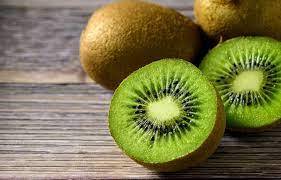
Do you guys like Kiwis? So let us talk about kiwis now, Kiwis are also referred as the Chinese gooseberry, this exotic fruit, is not just a tasty treat but can also be used in all types of yummy recipes like fruit salads, smoothies, and desserts.
Kiwis have been preferred by a lot of fruit lovers and diet enthusiasts for both their delicious, zesty (Sweet citrusy) taste, as well as their nutritional value. Packed with antioxidants, fiber, and vitamin C, these small fruits are like a nutritional powerhouse.
Kiwis are fleshy delicate fruit so you store them can have a big impact on how long they can last.
Even though it is always beneficial to eat fresh fruits but if you are busy and want to store them, no worries though, our Kiwi lovers! Here is your complete guide to storing kiwi fruit, so you can get the most out of this yummy summer treat.
Know Your Kiwis: Ripeness is Key!
In a 2024 Masterclass study, it was found that, unlike some other fruits, kiwis keep ripening after they're picked.
Imagine you buy/order a kiwi, and it's rock hard. Not quite ready for eating! This means a kiwi your kiwi needs a few days to soften up and can get perfectly ripe in a few days . So, the first thing to do for successful storage is to understand how ripe your kiwi is.
If the kiwi you bought today feels a bit hard/firm, it is not quite ready to eat. Do nothing simply let it sit at room temperature but out of direct sunlight, for 5-7 days.
You can easily detect if a kiwi is ripened or ready to eat. While examining the kiwi If you are able to see its skin having a brownish color and is soft to the touch then you can immediately tell that your kiwis are ready to eat.
Also If you want your kiwis to ripe fast then you should put an apple or banana in a paper bag with your unripe kiwis. These fruits release ethylene gas which will naturally ripen kiwis.
Refrigerate for Longer Freshness
Refrigerate for Longer Freshness
Ripe kiwis are best enjoyed within a few days. But who is feeling rushed so to extend their shelf life, you can transfer them to the refrigerator. The cool air slows down the ripening so you can enjoy your kiwis for longer.
Here's how to store ripe kiwis in the fridge:
Keep Packaging Loose: You should not keep ripe kiwis completely sealed in plastic bags. This could hold onto moisture and speed up the aging process. Instead, put them in the chiller drawer, loosely. Another useful option is a produce bag with holes.
Store them Seperately: In order to prevent your kiwis from ripening fast you should keep them away from fruits that release high levels of ethylene gas like apple & pear
With proper storage in the fridge, ripe kiwis can last for up to two weeks.
Supercharge your Storage: Freezing for Long-Term
If you have bought yourself too many kiwis that you won't be able to consume in time, freezing is a perfect alternative for long-term storage.
Frozen kiwi fruit is best for adding to your smoothies, yogurt parfaits, or even baking, although the texture may change slightly.
Here's the process for how you can freeze kiwi fruit:
Firstly you clean the kiwis properly then peel and slice them into bite-sized pieces, lay those kiwi slices on a baking sheet lined with parchment paper and freeze for about 2-3 hours. Once frozen solid, transfer the kiwi pieces to an airtight container or freezer bag.
Properly frozen kiwis can last for up to 3 months!
Bonus Tip: Eating the Skin
While many people (like us) throw away the fuzzy kiwi skin/peel , it's surprisingly loaded with nutrients, so if you like experimenting new things you can try eating them. Remember before eating the skin, carefully wash the kiwi under running water.
Conclusion
By following these easy storage tips, such as selection and freezing them, you can make sure your kiwis stay tasty, fresh and ready to eat whenever you want a taste of this zesty fruit.
So next time you pick up or order a bunch of kiwis, you'll be a kiwi pro! prepared with the knowledge of how to keep them delicious for longer time.
0 notes
Text
Best Foods to Freeze: Cut Waste, Save Cash

Did you know freezing food is like hitting 'pause' on the freshness clock? It's a genius way to save money, eat healthier, and make mealtimes a whole lot easier. Whether you're buying in bulk to save a few bucks or rescuing those almost-too-ripe bananas, your freezer is your friend. Let's dive into the best foods to freeze, some handy tips, and a few things to avoid tossing in there. Get ready to make your kitchen more efficient!
Foods That Freeze Well (and Why)
Ok, let's get practical! Here's a breakdown of foods that love a little chill time:
- Dairy Delights: Milk? Yep! Butter? You bet! Even shredded cheese and yogurt (if you're using it in smoothies or baking later) can take a freezer vacation.
- Quick Tip: Textures can change a bit, but the taste won't.
- Fruit & Veggie Heroes: Think berries, bananas ready for smoothies, grapes (a fun frozen snack!), peppers, onions, carrots, even zucchini if you grate it first.
- Pro Tip: Blanch veggies (quick dip in boiling water) to keep them bright and flavorful.
- Protein Powerhouses: Cooked meats like chicken and ground beef are perfect for future meals. Raw meats freeze fine too – just follow those USDA guidelines for safe storage!
- Meal Prep Champs: Soups, stews, and casseroles are amazing freezer friends. Just leave a bit of room on top for things to expand as they freeze.
- Handy Staples: Tomato paste, bread, cooked rice, nuts, even popcorn kernels freeze like a dream.
Tips for Freezing Food
Ready to fill up that freezer? Here's how to do it right:
- Cool it Down: Don't put hot food straight in the freezer – let it cool to room temperature first. You don't want to warm everything else up!
- Portion Control: Freeze stuff in the amounts you'll actually use. No one needs a giant block of frozen berries when a handful will do!
- Airtight is Key: Use freezer bags, containers, or even good quality plastic wrap to keep air out and prevent freezer burn.
- Label Everything: Write the name of what it is and the date you froze it. Your future self will thank you!
- Liquids Need Room: Soups and sauces will expand a little when they freeze, so don't fill containers to the very top.
Myth Buster: Did you know you can freeze eggs? It's true, but you have to crack them first! Whisk them up and freeze them in an ice cube tray for easy use in recipes later.
Is there anything these freezers can't do? Well, some things don't love freezing...
Foods That Don't Freeze Well
Not everything belongs in the icy depths! Here's what to avoid freezing:
- Delicate Produce: Lettuce, cucumbers, and other high-water-content veggies turn to mush when thawed. Best eaten fresh!
- Creamy Creations: Sauces with cream or milk tend to separate when frozen. They might be okay in cooked dishes, but not on their own.
- Fried Foods: The crispy goodness won't survive the thaw, sadly. Enjoy those while they're hot!
- Soft Cheeses: Cream cheese, ricotta... their textures take a serious hit in the freezer. Hard cheeses generally fare better.
Making the Most of Your Freezer
Now, let's turn your freezer into a superpower! Here's how:
- Meal Prep Master: Got a favorite recipe? Double it and freeze half for a night when cooking feels impossible.
- Bulk Bargains: Meat on sale? Stock up and freeze it! Just remember to divide it into usable portions first.
- Waste Warrior: Bananas turning brown? Bread going stale? Pop them in the freezer for later use (smoothies and bread pudding, anyone?)
- Freezer Inventory: Keep a list on your fridge of what's frozen. It'll prevent you from buying stuff you already have stashed away!
ProsConsSaves money: Buy in bulk or rescue food about to go badRequires some planning: Need proper containers and portioningReduces food waste: Prevents perishables from spoilingSome texture changes: Certain items won't be exactly the same after thawingConvenient: Have pre-prepped ingredients or ready-to-heat mealsFreezer space: Can fill up quicklyPreserves nutrients: Locks in nutrition at its peakNot everything freezes well: Delicate foods and creamy sauces can be tricky
FAQs about Freezing Food
- How long does food last in the freezer? It depends on the food, but usually several months to a year. There are handy charts online for reference.
- Thawed something and won't use it all? In most cases, you can safely refreeze food as long as it was thawed properly in the fridge.
- Is freezer burn dangerous? Nope, just unappetizing. It affects the taste and texture, but it won't make you sick.
The Importance of Food Safety & Quality
Freezing is fantastic, but food safety still matters! Here's the lowdown:
- USDA Guidelines Are Golden: They'll tell you safe freezing times and the best way to thaw different foods. Read the Freezing and Food Safety here
- Freezing Stops the Clock: It doesn't kill bacteria. So, if food was getting a bit iffy, freezing won't magically make it good again.
- Thaw Right: In the fridge is the safest way! Never leave things out on the counter to thaw.
Freezing Tips for Specific Foods
Alright, let's get specific! Here are some bonus tips for those everyday items:
- Fruits:
- Berries: Rinse, dry, and spread them out on a baking sheet to freeze individually. Then pop them in a bag – perfect for smoothies and snacking!
- Bananas: Peel, slice, or even leave whole (for smoothies). A squeeze of lemon juice helps them keep their color.
- Other fruits: Peaches, apples, and the like need a little prep before freezing, like peeling and preventing browning.
- Vegetables:
- Green beans, broccoli, etc.: Blanching quickly preserves their vibrant color and a bit of crunch.
- Peppers and onions: Chop and freeze raw – so convenient for tossing into soups and stir-fries later!
- Zucchini: Grate and squeeze out extra moisture. Great for sneaking into sauces and baked goods.
- Bread and baked goods:
- Sliced bread: Separates easily when frozen, perfect for grabbing a slice or two at a time.
- Muffins, cookies, etc.: Freeze individually, then store them together for easy grab-and-go treats.
- Herbs:
- Hardy herbs: Think rosemary and thyme – freeze them whole on the stem.
- Tender herbs: Like basil and cilantro – chop them finely and freeze in ice cube trays with a bit of olive oil for bursts of flavor.
- Liquids:
- Stock and broth: Freeze in ice cube trays or portions you'll actually use. Label with the amount!
- Tomato Sauce: Use freezer-safe containers and remember to leave room for expansion.
Funny Freezer Fact: You know those popsicles you buy in the long plastic sleeves? You can make your own! Fill the sleeves with juice, yogurt, or whatever you like, and freeze – perfect summer treat!
Key Takeaways
- Your freezer is a powerful tool for saving money and reducing food waste.
- Many foods freeze beautifully, extending their shelf life and preserving nutrients.
- Proper freezing techniques ensure your food stays tasty and safe to eat.
Conclusion
Your freezer isn't just for ice cream anymore! It's your secret weapon for saving money, reducing waste, and making healthy eating easier. By knowing what freezes well and following a few simple tips, you'll be amazed at what you can do. Remember, freezing is like a pause button on freshness – so use your frozen goodies in a timely way for the best flavors and textures.
Disclaimer: The information provided on this website is not intended to be a substitute for professional medical advice. Always consult with a qualified healthcare professional before making any decisions about your health.
Read the full article
0 notes
Text
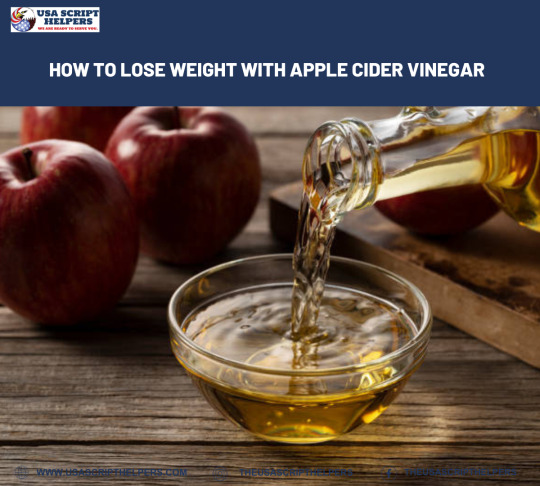
HOW TO LOSE WEIGHT WITH APPLE CIDER VINEGAR
Apple cider vinegar (ACV) has been touted as a natural remedy for a variety of health issues for centuries. In recent years, it has gained popularity as a weight loss aid. But how effective is it, really? In this article, we will explore the science behind apple cider vinegar and its potential benefits for weight loss, how to use it effectively, and important considerations to keep in mind.
Understanding Apple Cider Vinegar
Apple cider vinegar is made through a two-step fermentation process. First, apples are crushed and combined with yeast to convert their sugar into alcohol. Next, bacteria are added to ferment the alcohol into acetic acid, the main active compound in vinegar. This process not only gives ACV its potent tart taste but also embeds it with bioactive components like acetic acid, gallic acid, catechin, epicatechin, and chlorogenic acid, all of which are thought to contribute to its health benefits.
The Science Behind ACV and Weight Loss
Several studies have suggested that apple cider vinegar can help with weight loss, although it's important to note that ACV is not a magic solution. Here’s how it may help:
Appetite Control: Acetic acid, the main active ingredient in ACV, has been shown to reduce appetite, which can lead to a lower calorie intake. A study published in the Journal of the Academy of Nutrition and Dietetics found that vinegar ingestion at mealtime reduced total caloric intake by up to 275 calories throughout the rest of the day.
Blood Sugar Regulation: ACV can improve insulin sensitivity and lower blood sugar responses after meals. This can help manage cravings and reduce the likelihood of insulin-induced fat storage.
Fat Storage: Animal studies suggest that acetic acid can reduce fat storage by increasing the expression of genes that reduce belly fat storage and liver fat.
Metabolism Boost: There’s also evidence suggesting that ACV can increase metabolism. A study in mice showed that acetic acid increased the enzyme AMPK, which boosts fat burning and decreases fat and sugar production in the liver.
How to Use ACV for Weight Loss
To incorporate apple cider vinegar into your diet for weight loss, consider the following tips:
Start Slow: Begin with a small dose of about 1 teaspoon (5 ml) of ACV mixed into a large glass of water daily, and gradually increase to 1–2 tablespoons (15–30 ml) per day, divided into two or three doses.
Timing: Consuming ACV before meals may be most beneficial for weight loss, as it can help reduce appetite and control blood sugar levels.
Dilution is Key: Always dilute ACV in water or another liquid to prevent throat irritation or dental enamel erosion.
Incorporate it into Your Diet: Aside from drinking it, you can use ACV as a salad dressing or mix it into homemade mayonnaise or smoothies.
Considerations and Side Effects
While ACV can be a healthy addition to a weight loss plan, it's not without its drawbacks. Consuming large amounts of ACV can lead to nausea, dental erosion, throat irritation, and potentially lower potassium levels. Always talk to your doctor before starting any new supplement, especially if you have underlying health conditions or are taking medications.
The Bottom Line
Apple cider vinegar may support weight loss efforts through appetite suppression, improved metabolism, and other mechanisms. However, it should be used as a complementary strategy rather than a standalone solution. A balanced diet and regular physical activity are paramount for effective weight loss. Remember, the key to using ACV for weight loss is consistency and moderation, alongside a healthy lifestyle.
#usascriphelpersofficial#weight loss diet#weigth gain#weight loss treatment#weight loss#lose weight fast#weight loss motivation#weight loss tips#apple cider vinegar
0 notes
Text
Exploring the Vegan Raw Food Diet: A Fresh Approach to Health
The raw vegan diet has become more and more popular as a comprehensive strategy for health in recent years. This eating approach promotes environmental sustainability and offers numerous health benefits by embracing raw, plant-based foods in their natural state. Let's explore the foundations, advantages, and useful advice for a successful vegan raw food diet as we go deeper into this intriguing field.

Understanding the Vegan Raw Food Diet: What It's All About
The main focus of the raw food vegan diet is eating uncooked and unprocessed plant-based meals. This includes whole foods such as fruits, vegetables, grains, nuts, seeds, and sprouts that haven't been heated to a high temperature or cooked. Proponents of this diet contend that, in comparison to cooked foods, raw foods retain more nutrients and enzymes necessary for optimum health.
Get 500+ recipes in 11 euros: Just Check

Benefits of the Vegan Raw Food Diet: Nourishing the Body and Mind
Nutrient-rich foods: Packed full of key vitamins, minerals, and antioxidants, raw fruits and vegetables support general health and vibrancy.
Better Digestion: The enzymes in raw foods help with digestion, which may lessen indigestion, gas, and bloating.
Weight management: Because raw plant foods have a lower calorie density and a higher fibre content, a vegan raw food diet frequently results in natural weight loss or maintenance.
Enhanced Energy: Due to the nutrient-dense quality of raw plant foods, many people who follow a raw food diet report feeling more energised and having better moods.
Clearer Skin: Raw foods' high antioxidant content and high water content can help to promote radiant, clean skin and a more even complexion.
Get 500+ recipes in 11 euros: Just Check
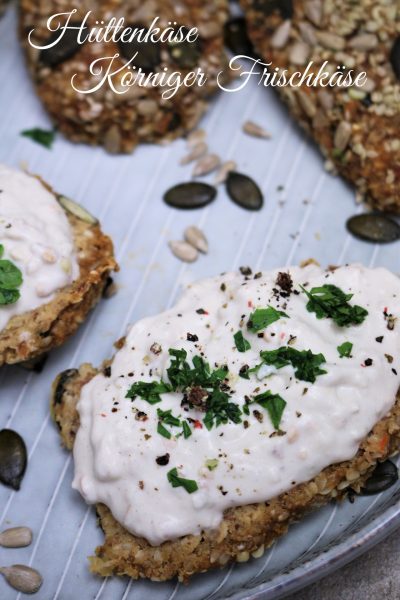
Getting Started with the Vegan Raw Food Diet: Practical Tips
Gradual Transition: Reduce the amount of prepared and processed food you eat over time while increasing the amount of raw fruits and vegetables in your meals.
Variety Is Essential: To guarantee a healthy and fulfilling diet, try a wide range of fruits, vegetables, nuts, seeds, and sprouts.
Drink lots of water-rich fruits and vegetables, such as leafy greens, watermelon, and cucumbers, to stay hydrated.
Food Preparation: To make delectable raw meals, snacks, and desserts, spend money on a high-quality blender, food processor, and dehydrator. Smoothies, salads, raw soups, zucchini noodles and dehydrated snacks like fruit leather and kale chips are common ingredients in raw cuisine recipes.
Pay Attention to Your Body: Observe your reactions to various raw foods and modify your diet accordingly. Certain people might
Get 500+ recipes in 11 euros: Just Check
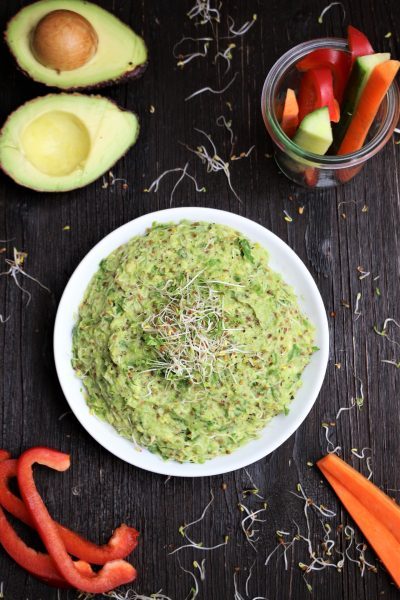
Potential Challenges and Considerations
Nutrient Absorption: Although meals high in nutrients are uncooked, cooking may make some nutrients more accessible. For maximum nutritional absorption, think about include modest amounts of cooked or fermented foods in your diet.
Social Situations: People who strictly adhere to a raw food diet may find it difficult to eat out or attend social events. Make advance plans by looking up raw-friendly dining establishments or bringing your own raw food to events.
Satisfying Nutritional Requirements: Make sure you're getting enough of certain important nutrients, such as protein, calcium, iron, and vitamin B12. Incorporate a range of plant-based protein sources into your diet, including leafy greens, legumes, nuts, and seeds.
Food Safety: To lower the risk of foodborne illness linked to raw foods, practise good food hygiene and storage Clean.
Get 500+ recipes in 11 euros: Just Check
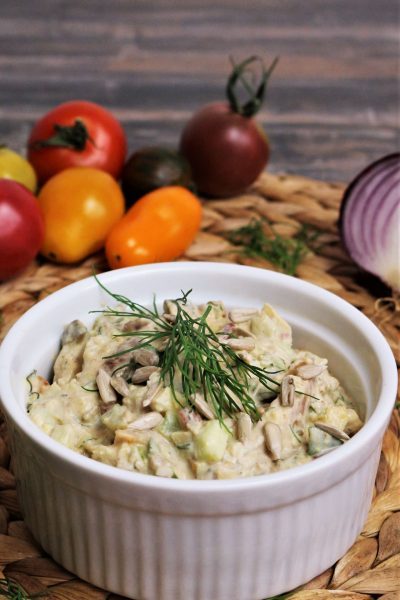
Conclusion: Embracing a Vibrant Lifestyle with the Vegan Raw Food Diet
To sum up, the raw food vegan diet presents a novel and lively way to achieve health and well-being. People may support environmental sustainability and nourish their bodies and brains by giving priority to entire, unprocessed plant foods in their natural state. Anyone can succeed on a vegan raw food diet with careful preparation, culinary ingenuity, and an attentive commitment to nutrition. Adopting a vegan raw food diet can result in a healthier, more vibrant lifestyle, whether your goals are to increase energy, improve digestion, or just to savour the bright flavours of fresh produce.
Get 500+ recipes in 11 euros: Just Check
0 notes
Text
A Fun celebration on your plate - BUTTERELA Natural Peanut Butter
Health Benefits of BUTTERELA Natural Peanut Butter:
Heart Health: The monounsaturated and polyunsaturated fats found in peanuts can help reduce the risk of heart disease by lowering levels of LDL (bad) cholesterol and increasing levels of HDL (good) cholesterol.
Weight Management: Despite being calorie-dense, studies suggest that incorporating moderate amounts of nuts and peanut butter like natural peanut butter into your diet may actually help with weight management. The combination of protein, fiber, and healthy fats helps promote satiety and reduce overall calorie consumption.
Blood Sugar Control: The combination of protein and fiber in natural peanut butter can help stabilize blood sugar levels, making it a suitable option for individuals with diabetes when consumed in moderation as part of a balanced diet.
Ways to Enjoy Natural Peanut Butter:
Peanut Butter and Banana Sandwich: Spread natural peanut butter on whole grain bread and top with slices of ripe banana for a classic and satisfying snack or meal.
Peanut Butter Smoothie: Blend natural peanut butter with banana, spinach, almond milk, and a scoop of protein powder for a creamy and nutritious smoothie that's perfect for breakfast or post-workout fuel.
Peanut Butter Energy Balls: Mix natural peanut butter with rolled oats, honey, and a sprinkle of dark chocolate chips. Roll the mixture into bite-sized balls and refrigerate for a convenient and energizing snack on the go.
Peanut Sauce: Combine natural peanut butter with soy sauce, lime juice, garlic, and ginger to create a flavorful sauce that's perfect for drizzling over stir-fries, noodles, or grilled vegetables.
Peanut Butter Yogurt Dip: Stir natural peanut butter into Greek yogurt along with a drizzle of honey and a dash of cinnamon. Use it as a dip for fresh fruit or pretzel sticks for a balanced and delicious snack.
BUTTERELA Peanut Butter and Jelly Overnight Oats: Mix natural peanut butter with rolled oats, almond milk, chia seeds, and a dollop of your favorite fruit jam. Let it sit in the refrigerator overnight for a convenient and nutritious breakfast option.
Tips for Storage and Usage:
Store natural peanut butter in the refrigerator after opening to prevent oil separation and maintain freshness. Remember to give it a good stir before each use.
If you prefer a creamier texture, you can gently warm the peanut butter in the microwave or by placing the jar in warm water for a few minutes before spreading.
Don't be afraid to experiment with different flavor combinations by adding ingredients like cocoa powder, honey, cinnamon, or vanilla extract to your best peanut butter brand creations.
Incorporating high protein peanut butter into your diet is not only delicious but also offers a multitude of health benefits. Whether you enjoy it spread on toast, blended into smoothies, or used in savory dishes, this versatile spread is sure to add a nutty twist to your meals and snacks while supporting your overall well-being.
0 notes
Text
From Field to Fork: The Journey of Nutrient-Rich Hemp Seeds
I. Introduction
As the wellness wave sweeps across the globe, hemp seeds have emerged as nutritional powerhouses, gaining popularity for their myriad health benefits. In this comprehensive exploration, we delve into the journey of nutrient-rich hemp seeds, from the cultivation fields to the consumer's table.

II. Cultivation and Harvesting
Hemp's journey begins with a tiny seed that transforms into a resilient plant. Sustainable farming practices play a crucial role in ensuring the health and vitality of hemp plants. From choosing the right seeds to implementing eco-friendly cultivation methods, farmers contribute to the nutrient density of the seeds. Harvesting techniques are also key to preserving the seeds' richness, ensuring that they reach their full potential.
III. Processing and Extraction
Once harvested, the journey continues with meticulous processing and extraction methods. Seed extraction is a delicate process aimed at preserving the nutrients within. Cleaning and sorting processes add another layer of quality control, ensuring that only the finest seeds make it to the next stage. Oil extraction, a vital step, unlocks the health benefits encapsulated within the seeds, providing a concentrated source of essential fatty acids.
IV. Nutrient-Rich Profile of Hemp Seeds
Hemp seeds boast an impressive nutrient profile. Packed with essential vitamins, minerals, and a well-balanced combination of macronutrients – protein, fiber, and healthy fats – these tiny seeds offer a nutritional punch. Understanding the depth of this profile is crucial for consumers looking to maximize the health benefits of hemp seeds in their diets.
V. Transportation and Distribution
Ensuring the freshness of hemp seeds is paramount during transportation and distribution. Proper handling and storage practices maintain the seeds' quality from the farm to the distributor. The journey to market involves a well-coordinated effort, involving various stakeholders in the supply chain. Sustainable packaging adds an extra layer, reducing the environmental impact and aligning with the ethos of conscious consumerism.
VI. Culinary Adventures with Hemp Seeds
Hemp seeds are versatile in the kitchen, offering creative possibilities for culinary exploration. From sprinkling seeds on salads to incorporating them into smoothies, the options are endless. The article provides popular recipes that showcase the nutrient-rich goodness of hemp seeds and offers culinary tips to maximize both flavor and nutrition.
VII. Dispelling Myths and Addressing Concerns
With popularity comes misinformation. This section addresses common misconceptions surrounding hemp seeds, clarifies legal considerations to navigate regulations, and provides facts versus fiction regarding allergies associated with hemp seeds.
VIII. Real Stories from the Hemp Fields
The human touch is brought to life through interviews with hemp farmers and producers. Their experiences, successes, and dedication to sustainable hemp farming contribute not only to the seeds' quality but also to the interconnectedness between producers and consumers.
IX. Future Trends in Hemp Cultivation
Looking ahead, we explore the innovations shaping the future of hemp cultivation. From sustainable farming practices to the role of hemp seeds in climate-resilient agriculture, this section peers into the crystal ball, offering insights into the potential trajectory of hemp seed production.
Source High-Quality Hemp Seeds from Hemp in India
Looking for bulk hemp seeds for planting or industrial applications? Hemp in India is your one-stop shop! We offer a variety of premium seed options to suit your needs. Visit our website www.hempinindia.com to explore our selection and start your hemp journey today.
X. Conclusion: Nourishing the World, One Seed at a Time
As we reflect on the nutrient-rich journey of hemp seeds, the article concludes by encouraging conscious consumer choices. From field to fork, the wholesome path of hemp seeds symbolizes not only a nutritious choice but a sustainable and interconnected approach to nourishing the world, one seed at a time.
0 notes
Text
The Ultimate Guide to Incorporating Chia Seeds into Your Diet
Chia seeds have been gaining popularity as a superfood due to their numerous health benefits and nutritional value.
As more people become health-conscious and seek to improve their well-being, the demand for chia seeds in Australia has increased.
This comprehensive guide will explore how to incorporate chia seeds into your diet to harness their full potential and reap their benefits.
Understanding Chia Seeds
Chia seeds are tiny black seeds derived from the plant Salvia hispanica, which is native to Mexico. Despite their small size, chia seeds contain essential nutrients such as omega-3 fatty acids, protein, fibre, antioxidants, and vitamins and minerals. These nutritional powerhouses contribute to heart health, weight management, and improved digestion, making them valuable to a healthy diet.
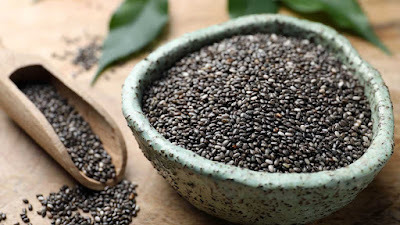
Ways to Incorporate Chia Seeds into Your Diet
A. Breakfast Ideas
Starting your day with chia seeds Australia can set a healthy tone for the rest of your meals. Chia seed pudding is famous for offering a delightful blend of chia seeds, milk (or a dairy-free alternative), and natural sweeteners like honey or maple syrup. Additionally, chia seeds can be seamlessly added to smoothies or yogurt bowls for an extra nutritional boost. For those who prefer a warm breakfast, chia seed oatmeal is satisfying and nutritious.
B. Lunch and Dinner Options
Chia seeds can be creatively incorporated into lunch and dinner recipes, adding texture and nutrients to the meals. For a delightful crunch, try using chia seeds as a crust for chicken or fish. They can also be sprinkled onto salads or used in homemade dressings to elevate the nutritional profile of your meal. Veggie burgers or meatballs made with chia seeds offer a plant-based alternative rich in protein and fibre.
C. Snack Time with Chia Seeds
Chia seeds can be rescued with various healthy snack options when hunger strikes between meals. Prepare homemade energy bars using chia seeds for a convenient and nutritious on-the-go treat. Roasted chickpeas seasoned with chia seeds make for a crunchy and flavourful snack, while chia seed crackers or chips provide a satisfying crunch without compromising health benefits.
Baking with Chia Seeds
Chia seeds can be a vegan-friendly substitute for eggs in baking recipes, acting as a binding agent while adding nutritional value. Whether you're making bread, muffins, or granola bars, incorporating chia seeds into your baking endeavours is a simple way to enhance the nutritional content of your favourite treats.
Tips for Buying and Storing Chia Seeds
When purchasing chia seeds, look for high-quality seeds that are organic and free from additives. Proper storage is essential to maintain the freshness of chia seeds, as their high oil content makes them susceptible to rancidity. Store chia seeds in a cool, dry place, preferably in an airtight container, to preserve their nutritional integrity.
Conclusion
In conclusion, chia seeds offer a versatile and nutritious addition to daily meals. By experimenting with different recipes and meal ideas, you can harness the full potential of chia seeds and enjoy their numerous health benefits. We encourage you to explore the possibilities of incorporating chia seeds into your diet and experience their positive impact on your overall well-being.
Incorporating chia seeds into your diet is a simple yet effective way to prioritise your health and well-being. Whether you're looking to boost your energy, improve digestion, or enhance your nutrient intake, Buy chia seeds Australia from a reputable provider like Nuts About Life, as they will serve you the quality. So, visit their website and buy chia seeds online and support your goals for a healthier lifestyle.
0 notes